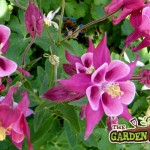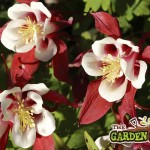SEE IMAGES OF AQUILEGIA:
- Aquilegia Pink
- Aquilegia Red
- Aquilegia Blue
Aquilegia Shape & Size:
Final Height: 60cm
Final Spread: 40cm
Aquilegia Growth:
Aquilegias, also known as Columbine are hardy plants with a delicate flower that blooms throughout the winter months. They come in a wide range of colours and they have the ability to cross pollinate which often gives rise to a whole host of new and exciting coloured flowers
Aquilegia is a wonderful plant in the garden because of their ability to self-seed, spread and come back year after year. You can plant these aquilegia roots in flower beds, or containers but eventually, over time their presence will extend to all areas of the garden
Type: Herbaceous Perennial
Habit: Tall, upright plant with an open habit
Aquilegia Features:
Foliage: Evergreen & Herbaceous
Colour: Mid green colour, to blue green sometimes with a hint or outline in brown / purple. Foliage appears in early spring and should be cut back in late autumn
Shape: Each leaflet is similar to clover with its tri-foliate and rounded leaf margins
Aquilegia Flowers
Bell shaped flowers appear at the tips of long stems from mid spring to late summer. They flower heads tend to droop delicately and bob around in the light breeze. Each flower consists of bi or tri coloured blooms with the petals, sepals and stamen providing the colour mix
Flowering period: April to September
Aquilegia Location
Uses: Offers summer colour in garden. Use as fillers between low growing shrubs such as hebes, box and lavender
Suits a cottage style garden where the plants can spread and self-seed
Aspect: Choose a bright & sunny location
Soil: Well drained & fertile soil
pH: Any pH
Hardiness: Hardy
Companion Plants: Depends on the flowering colour but plants including: hosta, geraniums, aubrietia and sedums all sit well next to aquilegia
Aquilegia Information
Every few years clumps of Aquilegia can be divided. This can be down in early spring. Lift and divide the roots, if the roots are dry you should soak them in luke-warm water prior to sowing
The tips of the roots should be lightly trimmed to help stimulate some root growth. Plant the cuttings into a prepared hole with added compost such as John Innes number 3 compost. To give your roots a better start you can offer add a small amount of RHS rootgrow to help establish your plants


